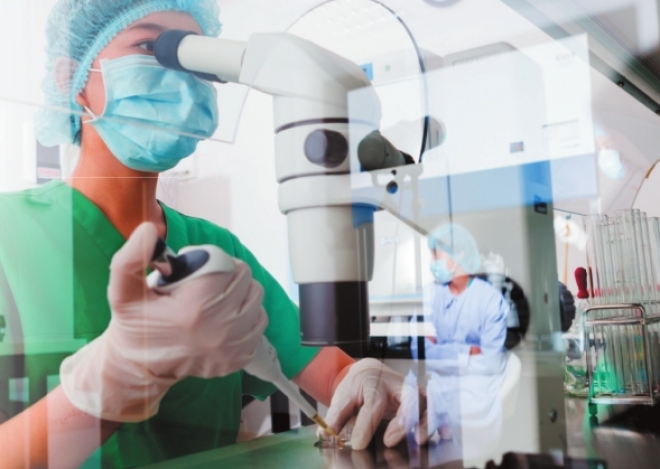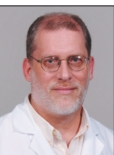CANCER DEVELOPMENT

Multiple mutations are required
There’s an e-mail and social media post that often circulates claiming to be a cancer update from Johns Hopkins. Rather than engaging in an argument debunking specifics of that post, I instead want to address the ideas put forth by the article with a narrative about cancer in general.
Cancer is a genetic disease that results from the mutation of DNA. There are about 10 trillion cells in the human body with each cell containing 115 centimeters (about four feet) of DNA. Most of the DNA, however, is supportive and does not carry any real genetic information. Each day there are millions of mutations that occur in each individual’s DNA. Fortunately, most of these mutations are repaired and occur in DNA regions that have no association with cancer development and, therefore, result in no injury or risk to the individual. However, over an individual’s lifetime, he or she will accumulate thousands of unrepaired mutations that involve genes that can lead to cancer. Cancer is generally a disease of aging and accumulation of mutated genes. There is, however, no single gene mutation that will cause cancer. Cancer development requires multiple mutations to occur in a single cell’s DNA to result in cancer. These multiple mutations result in numerous required events including uncontrolled proliferation, loss of proliferation control, invasion, embolization, implantation and escape from normal immune surveillance (amongst multiple other mutation events). When looking at the number of events required to develop cancer, it is surprising that cancer ever occurs. When looking at the number of cells, the rate of mutations and the human lifespan, it is surprising that it doesn’t happen more often.
 During
an individual life span, “cancer cells” probably develop on several
occasions. The body, however, does correct for these mutations and
abnormal cells by activating suicide genes (the cell is programmed to
die), or the immune system recognizes the abnormal cell and removes
(kills) the cell(s), therefore eliminating the cancer and preserving
life. Cancer occurs when the suicide genes are mutated or mutations
occur that hide the cancer cell from the immune system.
During
an individual life span, “cancer cells” probably develop on several
occasions. The body, however, does correct for these mutations and
abnormal cells by activating suicide genes (the cell is programmed to
die), or the immune system recognizes the abnormal cell and removes
(kills) the cell(s), therefore eliminating the cancer and preserving
life. Cancer occurs when the suicide genes are mutated or mutations
occur that hide the cancer cell from the immune system.
DNA mutations occur as a result of carcinogens, which include chemicals, radiation and
virus infections. The Internet is full of advice for cancer-free diets,
diets to increase immune function as well as diets to cure cancer. There
is no diet that is free of carcinogens. Every food we consume, whether
natural or preserved, vegetarian or non-vegetarian, cooked or uncooked,
all have carcinogens. For example, the cruciferous vegetables, reported
as cancer preventing, contain isocyanates which are carcinogenic.
One of the most potent carcinogens we consume is aflatoxin, which comes from the fungus Aspergillus flavus. In the early part of the 20th century, the most common cancers seen were gastric (stomach) and liver cancer, which far exceeded the incidence of breast and lung cancer. In the ’30s and ’40s there was a dramatic drop in the incidence of these two cancers, which I call the “Frigidaire Effect.” This is when low-cost refrigeration became available; food was better preserved, therefore preventing the growth of this fungus and reducing our exposure to the aflatoxin. Today, the FDA regulates the allowable aflatoxin level in foods. The highest levels are found in peanut and soy products. It is probably not a good idea to eat peanut butter at every meal; however, I still enjoy a peanut butter and banana sandwich at least once each week.
If all foods contain carcinogens, the best advice is to eat a varied diet which is heavy on vegetables and fruits. Beef, especially charred beef, should be a limited, but not an eliminated, part of our diets. There is no diet that has been shown to improve immune function over a good complete diet. Extreme diets which include starvation or limitation of essential nutrients can cause a reduction in immune function. These diets are unlikely to occur in the U.S.
We live in a sea of carcinogens, be it from our diet, radiation exposure (from the sun and other sources), viruses, alcohol and tobacco. Every single cancer’s incidence is increased by tobacco exposure, not just lung. After recognizing Breast Cancer Awareness Month in October, let’s talk about breast cancer risk.
Risk factors for breast cancer include having no children, no breast feeding, estrogen replacement after menopause, smoking and alcohol consumption, and possibly obesity and lack of exercise. Smoking increases the risk 20 percent over the base rate, while drinking alcohol will result in a measurable increased risk with each drink consumed beyond one drink per week.
Viruses can cause cancer. The human papilloma virus (HPV) is associated with cervical and oral cancers and, although deaths from cervical cancer are low, the treatment has significant consequences. Infection with this cancer-causing virus can be significantly reduced with the HPV vaccination.
An individual’s own intervention to reduce cancer risk should follow these basic guidelines:
• Eat a varied diet with emphasis on fruits and vegetables.
• No smoking.
• Limit alcohol consumption.
• Reduce sun exposure with protective clothing and sunscreens.
• Participate in regular exercise to include both aerobic and muscle strengthening.
• Provide HPV vaccination for all of our children (boys and girls).
Each individual cancer is unique.
For example, all the cancers will have similar cancer-causing gene mutations while the cancer mutations in lung cancer will have differences from breast cancer, while patients with breast cancer will often have different mutations from other patients with breast cancer. The human genome project mapped the human DNA and has allowed for the rapid advancement in our knowledge of genetic diseases, including cancer. This knowledge and understanding has led to the development of drugs that target these defective genes and the development of drugs that target the tumor gene characteristics that allow the cancer to hide from the immune system. Chemotherapy and radiation remain an important part of cancer treatment; however, newer technology and targeted therapies have become increasingly effective. These new therapies not only improve the survival rates, but have also improved the quality of life of patients who suffer from cancer. Feist-Weiller Cancer Center has entered a new era in cancer care with the Genomic Medicine Center, which will provide resources for regional and state cancer care providers to identify gene targets and drugs to target the unique gene profiles of individual cancer patients.
This new era of cancer care is extremely promising, and I am personally excited for the potential benefits this new knowledge and technology will provide our cancer patients. Our current therapy options are improving and will continue to improve. We will continue to see significant improvements in the outcome of patients with cancer.
Dr. Gary Burton is an oncologist at LSU Health Shreveport’s Feist-Weiller Cancer Center.
